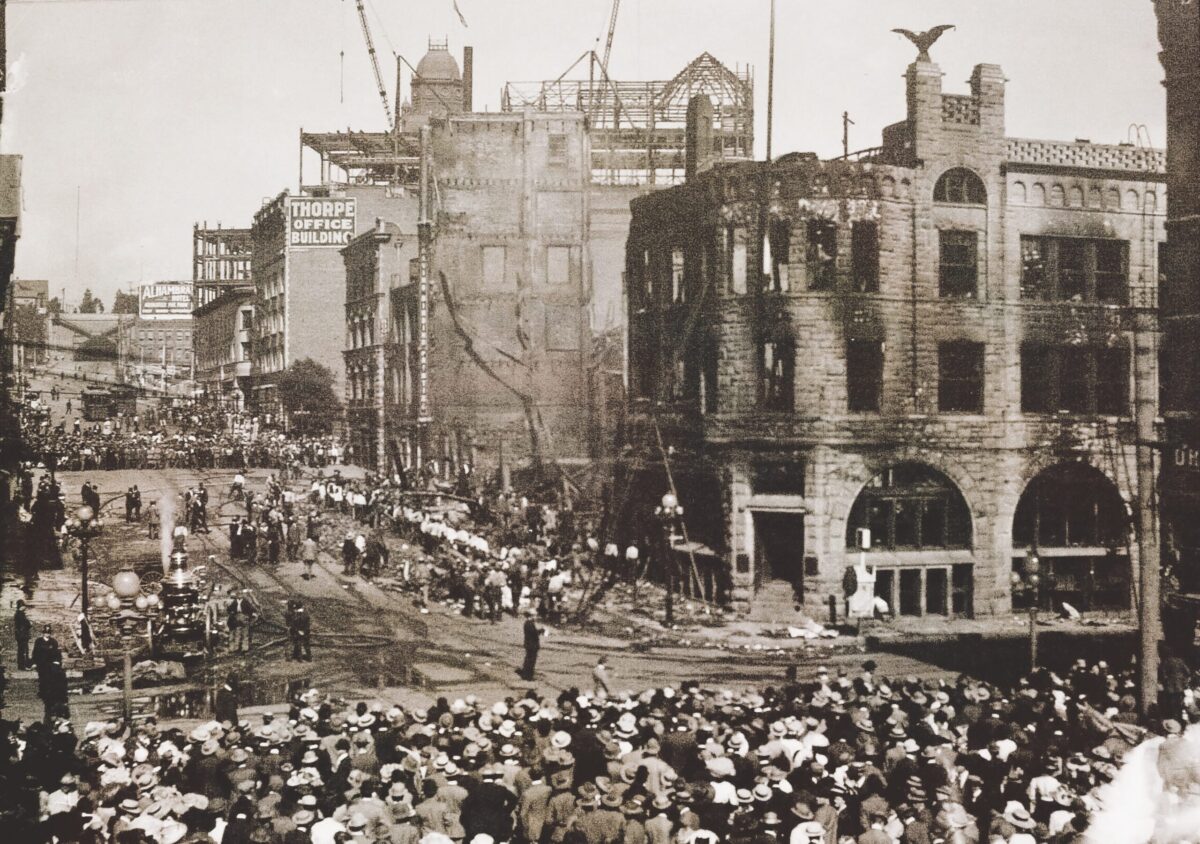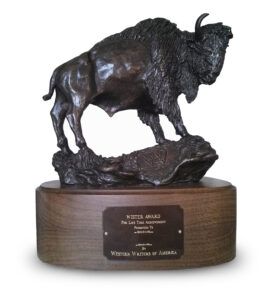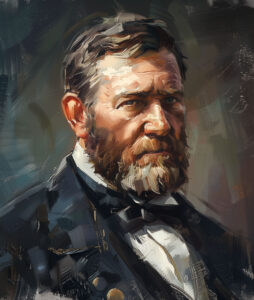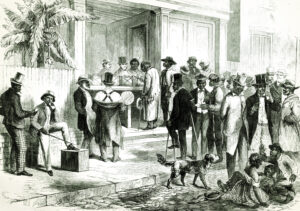Bombing of the Los Angeles Times exposed business plot to steal water supply and make the rich richer
For days Jim McNamara had been casing “The Fortress,” as Los Angeles Times publisher Harrison Otis referred to the industrial complex in downtown Los Angeles that housed and printed his newspaper. Otis, a bellicose Civil War veteran who liked to go by “General,” called his employees “The Phalanx” and his Mission Revival mansion “The Bivouac.” Once a staunch union man but now fiercely conservative, Otis was doing his best to keep unions out of a town he thought of as his.
McNamara had come to change that.
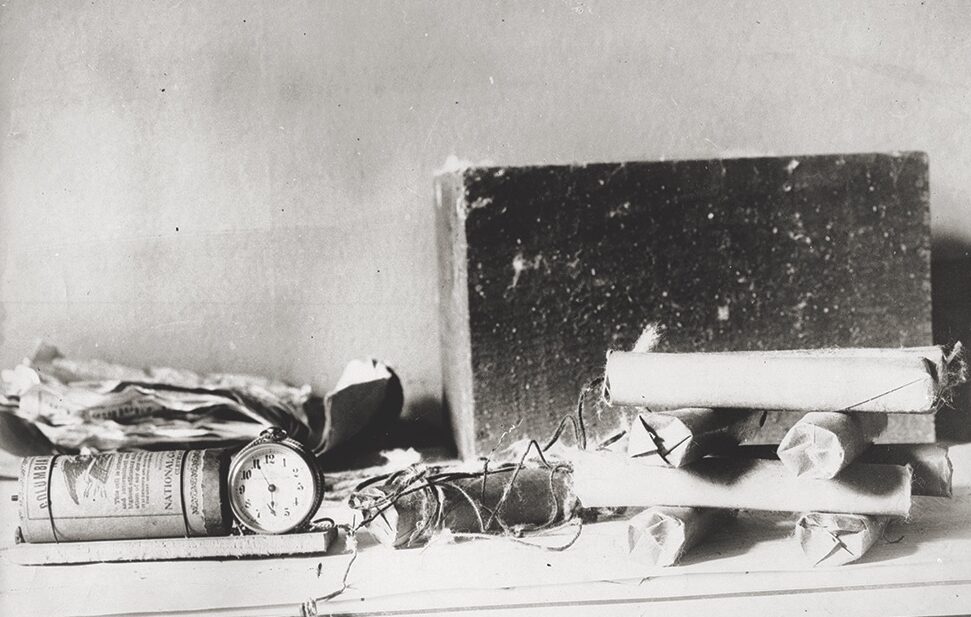
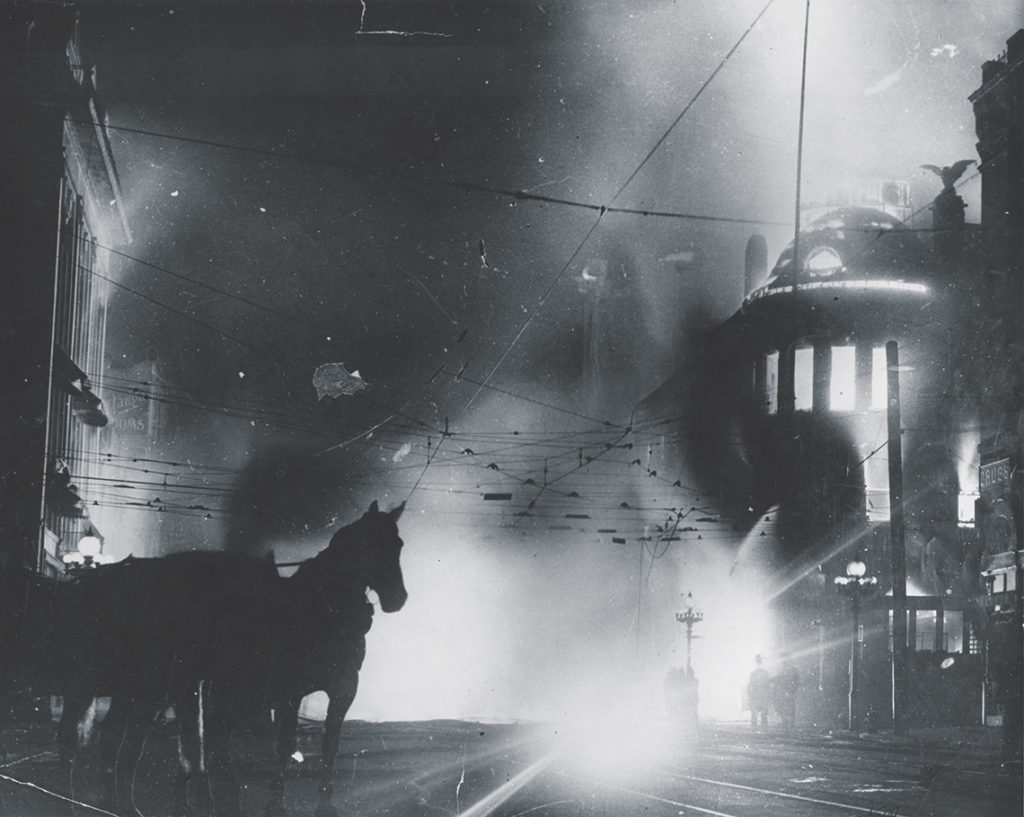
A breezeway called Ink Alley connected the Times editorial offices with the paper’s printing plant. At all hours, typesetters, pressmen, reporters, and laborers streamed through the open-air passage, which also served as an informal lunchroom and storage for barrels of ink, a volatile substance. A little after 5 p.m. on Friday, September 30, 1910, McNamara, 28, sandy-haired, blue-eyed, and hawk-nosed above a drooping mustache, walked off Spring Street into the breezeway. He was carrying a workingman’s satchel that he stowed behind a row of barrels. McNamara walked back out to Spring Street, where electric lights blared the Times motto, “All the news, all the time.” He had until 1 a.m. to make two more deliveries, after which he was to catch a train to San Francisco, 500 miles north.
Around midnight, at the corner of Wilshire Boulevard and Park View Street, McNamara, carrying a valise, was behind a hedge at The Bivouac. He opened the suitcase. Inside lay 16 sticks of dynamite cushioned in sawdust. Wires snaked from the TNT to a battery connected to a wind-up clock. McNamara cranked the timepiece and latched the bag. He had one more stop, about 15 blocks away: 830 Garland Avenue, home of Felix Zeehandelaar, secretary of the Los Angeles Merchants & Manufacturer’s Association. Once done there, McNamara caught his northbound train.
That evening, some of the 100-plus Times workers in the three-story Fortress complained of smelling natural gas—not odd; gas jets lit most of the complex, and complaints of gas leaks were common. At 1:07 a.m., a few people heard a dry pop. A boom followed as an explosion rocked the buildings and the façade facing Broadway cracked. The barrels in Ink Alley caught fire. Within four minutes The Fortress was an inferno. Compromised joists failed. Iron-framed linotype machines crashed from the second floor to the first. Printers, editors, and pressmen ran for stairwells into walls of ink-fueled flame. From the third floor, journalists were jumping to the pavement, some of them to their deaths.
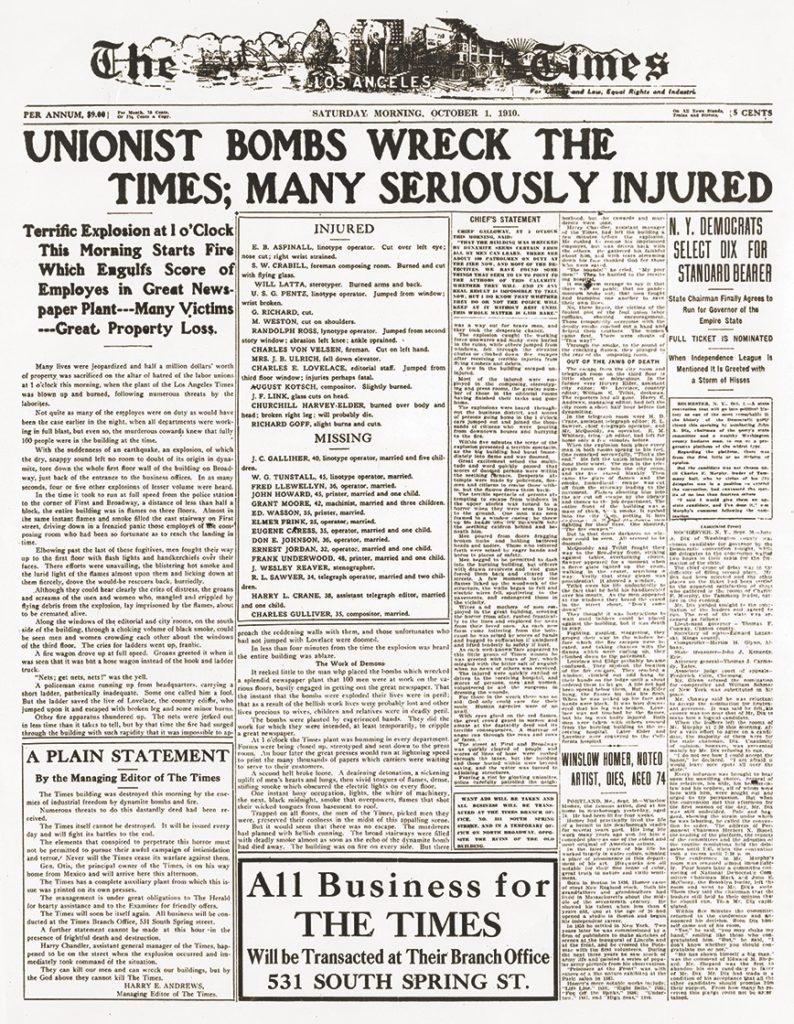
A few extended a ladder that was almost long enough to span an alley, with one fellow holding the far end. Six men made it across before he had to let go.
Explosions and fires destroyed the Times complex. At Otis’s home, police detectives pulled a valise from the hedge and opened it. Hearing a whir, they dove out of the way. No one was hurt, but the blast left a ten-foot crater. At the Zeehandelaar house, the bomb lay intact; its timer, a New Haven Clock alarm model, had jammed. For months, bombs fake and real had been rattling Los Angeles, doing little damage. The blast at The Fortress killed 21 and injured 17. The next edition of Otis’s paper blared, “Unionist Bombs Wreck Times.”
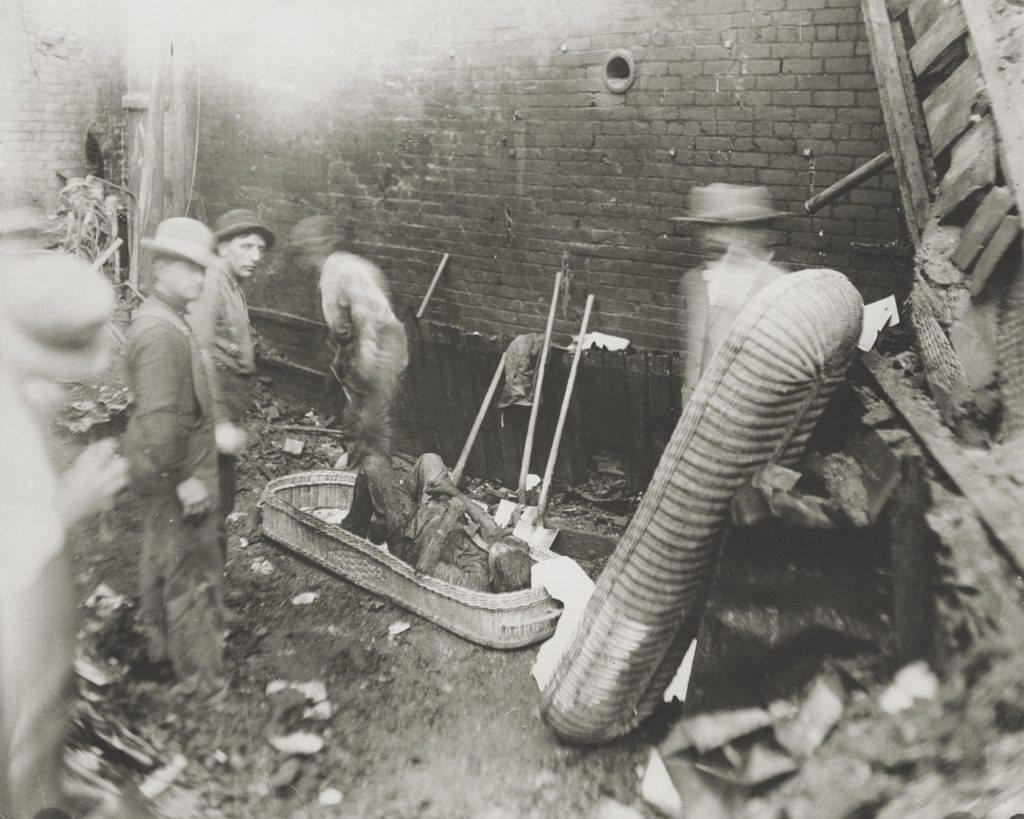
Everything about Harrison Gray Otis, 73, was big: his belly, his walrus mustache, his opinions. He spoke in a bark. The Civil War, in which he was promoted seven times by the Union Army and twice wounded in battle, kept him from going into journalism until after Appomattox. Following the war and a fling as a unionized newsman, he served as official reporter of the Ohio House of Representatives. In Washington, DC, he hired on as a compositor and foreman at the Government Printing Office, then at Treasury as an agent, relocating for three years to the Seal Islands in the Bering Sea. In 1876 Otis moved his family to Santa Barbara, California, population 3,000. He bought the local paper. In 1882, he became editor of the Los Angeles Daily Times, soon renamed the Los Angeles Times. Discovering the Times was broke, he convinced the owners to give him a 25 percent ownership provided he found investors, which he did. Within four years he owned the paper. The editorial pages blared his views, especially his loathing for unions; he denounced organizers as “gorillas.” In 1890, when LA’s four dailies insisted typesetters accept a 20 percent wage cut or be replaced, International Typographers Union members struck. The other dailies caved. The Times stood fast, deriding merchants who sided with the strikers as “cowards and cravens.” The Otis-founded Merchants & Manufacturers Association—motto: “You shall employ no union man”—quickly enlisted 6,000 members.
Unions kept at it. The typesetters soon had allies among other American Federation of Labor signatories—launderers, brewers, bakers, butchers. Otis knew who was backing the effort: labor bosses in San Francisco. Unionization in the Bay Area, always strong, had hoisted skilled tradesmen’s wages 30 percent above those in Los Angeles. In 1907, the AFL executive committee, seeing Harrison Otis as the single largest impediment to unionization in America, secretly passed a resolution for “a war fund for use in attacking the Los Angeles Times.” The move coincided with one trade’s embrace of violence.
To organize closed shops, where union membership was mandatory—as opposed to an “open shop,” where membership was optional—building trades workers had long used strong-arm tactics like vandalizing machinery, cables, windows, and woodwork and pelting non-union workers, called “scabs,” with tools and bricks. For decades, dynamite had been a labor weapon, wielded by carpenters against McCormick Reaper and the police in Chicago, Illinois; by steelworkers against the Carnegie Steel Company and Pinkertons at Homestead, Pennsylvania; and by miners against operators and their security forces across the West. Trying to avoid casualties, bombers targeted job sites and acted by night, often luring watchmen out of harm’s way before a blast.
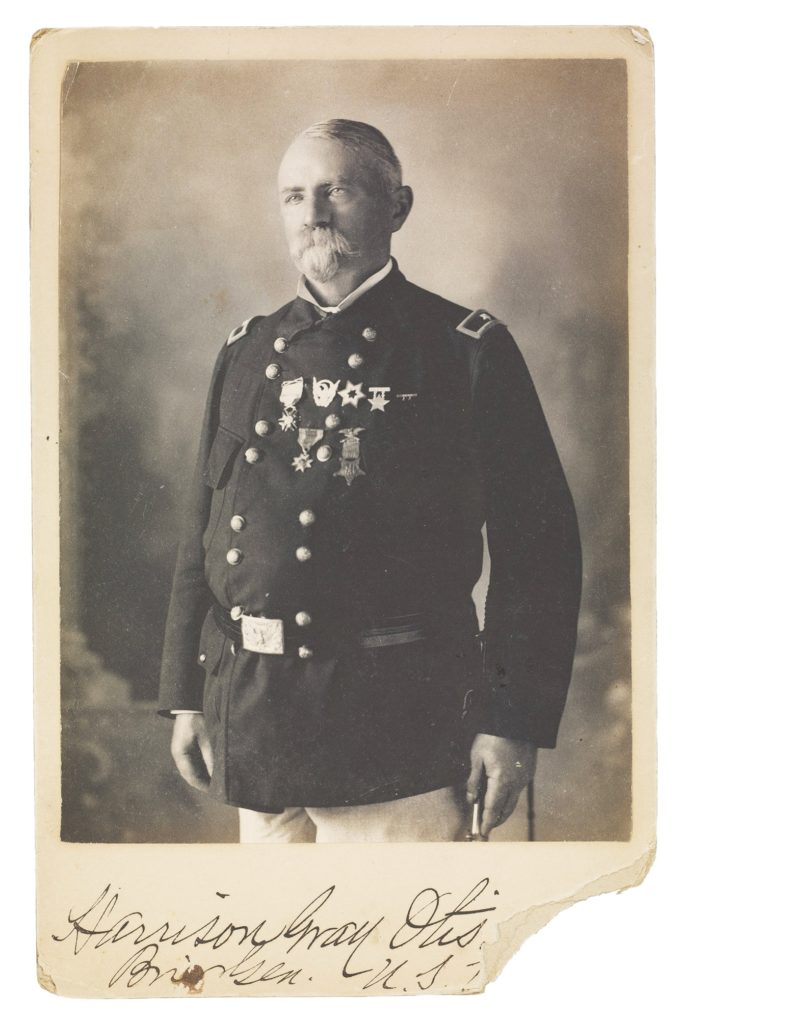
Ironworkers also came into their own as bombers. Organized in 1896, the International Association of Bridge and Structural Iron Workers started with five locals—New York, Buffalo, Boston, Pittsburgh, and Chicago—and now had its headquarters in Indianapolis, Indiana. Representing a dangerous trade—statistically, each year one ironworker in 100 stood to die—the union had its first success in 1903, organizing U.S. Steel subsidiary American Bridge Company. Opposed in 1906 by the 40-member National Erectors’ Association, an industry group, ironworkers countered with TNT, between 1905 and 1910 dynamiting some 150 buildings in the United States and Canada, doing mostly minimal damage and killing no one. During that period, ironworker wages rose from $2.50 for 10 hours’ work to $4.30 for an eight-hour shift.
San Francisco’s pro-union electorate was keeping the Union Labor Party in office, encouraging organizers there to take on Los Angeles, known as “Otistown of the Open Shop.” By summer 1910, the City of the Angels was a battleground. On June 1, 1,500 ironworkers and members of half a dozen other unions walked off the job. A judge enjoined strikers from picketing in a decision the Los Angeles City Council unanimously endorsed. Unions picketed anyway, quickly springing 472 arrested strikers by paying their $100 fines. Otis’s business group raised a $350,000 war chest while his Times pounded the anti-union drum.
Bombs began appearing. The first, at a Fourth Street annex being built onto the Alexandria Hotel, was a fake—a rusty wristwatch strapped to a manure-packed pipe—but clearly a warning. The next, at the new Hall of Records at Broadway and Temple, was the real thing. Warned, police defused the explosive device. Angelenos quailed. Businesses grew fearful. San Francisco ironworkers local leader Eugene Clancy cabled headquarters in Indianapolis, begging for seasoned organizers to turn Los Angeles into a closed-shop town.
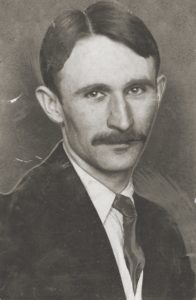
Clancy’s telegram came to ironworkers union secretary-treasurer John Joseph McNamara. A devout Catholic who belonged to the Knights of Columbus, a fraternal order, and devoted son who supported his mother in Cincinnati, Ohio, J.J. McNamara was an up-by-the-bootstraps lawyer dedicated to the working man. He controlled a secret ironworkers union fund for underwriting a bombing campaign directed at recalcitrant employers. Believing the situation in Southern California required more than speeches and picket lines, John McNamara, 34, asked his younger brother to go to Los Angeles. James Barnabas “J.B.” McNamara, a lean, hard-living fellow known for being “good with a stick,” set about acquiring TNT. At Giant Powder Co. in Oakland, California, he bought a load that he stashed in an abandoned house in San Francisco. In September he and associates rented a small vessel and with enough of their stock of dynamite to rock Los Angeles sailed south.
Summer 1910 and its provocations could not have come at a worse time for Harrison Otis. He, former mayor Frederick Eaton, Los Angeles Water Department head William Mulholland, and other power brokers were privy to inside information about LA’s future. To grow and prosper, the city in the desert needed water. The Owens Valley, east of the Sierra Nevada mountains and 250 miles north, was the only source capable of watering Los Angeles.
Touting a nonexistent federal plan to develop Owens Valley, Eaton and Mulholland conned farmers there into relinquishing their water rights. In 1906, the federal government formally declared it had no plans for the valley. Los Angeles officials quickly announced plans to build a gravity-fed aqueduct to carry valley water to LA. The December 1911 city election was to include a referendum to authorize issuance of millions in bonds to fund the waterway.
Times editorials warned Angelenos that a single drought stood between them and desolation. Knowing that under a scheme still under wraps the city would soon be annexing the arid San Fernando Valley, Otis and his co-conspirators secretly bought up land there.
On September 4, 1910, William Burns, 49, dapper in a three-piece suit and bowler, bent to the ground in a Peoria, Illinois, railyard. The former U.S. Secret Service agent, now proprietor of the Burns International Detective Agency, filled a paper sack with sawdust. Burns, whose agency had been hired by the National Erectors Association to investigate an explosion, already had found an empty can that had held the explosive nitroglycerine. He took sack and can to the railway office of the McClintic-Marshall Iron Works and called the company’s president. At the works the night before a bomb had detonated underneath a flatbed car loaded with girders. Burns saw in the wreckage the hand of whoever had been setting off bombs across America the last four years.
Working the Peoria case for weeks to no avail, Burns set aside that task to catch a train for Los Angeles, where he was to give a speech.
Early on October 1, 1910, he was en route between Arcade Station and the Hotel Alexandria when his taxi driver passed the ruined Times complex. At the hotel, Burns’s room phone rang. The caller was Los Angeles Mayor George Alexander, begging Burns to investigate the bombing. Burns agreed. Canceling his speech, he examined the disabled Zeehandelaar device, noting the use of sawdust, similar to what he had seen in Peoria. He and his men began an investigation in LA, getting nowhere until Christmas. That day blasts injured a watchman at the Llewellyn Iron Works at North Main and Redondo, a mile from the Times complex.
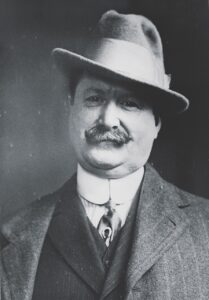
Burns reviewed what he knew. He had traced the nitro used in Peoria to Portland, Indiana, where “J.W. McGraw,” described as short and round-faced, had bought the explosive, paying cash and insisting the nitro be delivered to an address 200 miles away that proved to be an empty intersection. At the crossroads, a Burns man found wrapping that had sawdust in its creases. Burns also knew that in September, at Giant Powder in Oakland, one “J.B. Bryce”—early 30s, 5’10”, 190 lb., sandy hair, blue eyes—had bought 10 boxes of dynamite, each holding 24 sticks. “Bryce” had paid in gold certificates, a Bay Area rarity, and had had Giant deliver the TNT to a spot on the San Francisco waterfront. At the address—a vacant, trash-strewn lot—Burns found a receipt for dynamite. Nothing else turned up in adjacent boarding houses, hotels, and homes, but pulling aside a tarpaulin in a deserted dwelling the detective uncovered 10 crates of dynamite. Each held 24 sticks of TNT. There also were two empty crates—48 sticks missing. The Zeehandelaar setup had contained 16 sticks. The bombs at The Fortress and The Bivouac likely had been of the same explosive power.
Burns was pursuing these leads in spring 1911 as bombers were dynamiting ironworking shops and iron mines in Illinois, Indiana, Nebraska, and Ohio. More clues coalesced. The summer before, “Bryce” had attended a week-long course on blasting in Seattle, Washington. The instructor remembered his student showing him a can labeled “Portland” containing two sticks of TNT. Nobody in Portland, Oregon, made dynamite but, as Burns knew, TNT was made in Portland, Indiana, where the year before “McGraw” had bought nitro, perhaps for the Peoria job.
The Seattle blasting instructor said “Bryce” had mentioned working in Indianapolis. Burns sent operatives with descriptions and police artists’ drawings of “Bryce” and “McGraw” to stake out the ironworkers union offices. Burns happened to be there with his agents when a short, cherubic fellow matching the description of “McGraw” appeared in the lobby. He was with a bigger man whose steel gray hair fell across his forehead: union secretary-treasurer J.J. McNamara. Tailing “McGraw,” Burns’s men identified him as Ortie McManigal. McManigal’s travels led those investigators to “Bryce”—J.B. McNamara.
On April 11, 1911, Burns and his men, accompanied by two Chicago police detectives, tailed McManigal and J.B. McNamara to Detroit. The pair checked into a hotel, leaving suitcases with a bellman. On April 14, the city detectives arrested McManigal and McNamara. In their suitcases Burns found a dozen explosive devices identical to those used in Peoria and Los Angeles. Burns telegraphed Mayor Alexander in Los Angeles, directing him to speed extradition papers to Illinois. To keep the arrests from becoming public knowledge, Burns stowed McManigal and McNamara at one of the police detectives’ homes. When McNamara refused to cooperate, Burns leaned on his companion. “Just because you didn’t plant the bombs in Los Angeles doesn’t mean you won’t be charged for murder,” he told McManigal. “You will. And you’ll hang for it.” McManigal said in exchange for immunity he would tell all. He explained that J.J. McNamara had been running the bombing operation—six years, 100-plus attacks—and was even hiding dynamite at the American Central Life Building in downtown Indianapolis. A safe full of explosives was in the fifth-floor headquarters of the ironworkers union.
On April 22, 1911, a Los Angeles assistant district attorney arrived in Chicago with papers to extradite McManigal and McNamara to California. Illinois Governor Charles Deneen signed off.
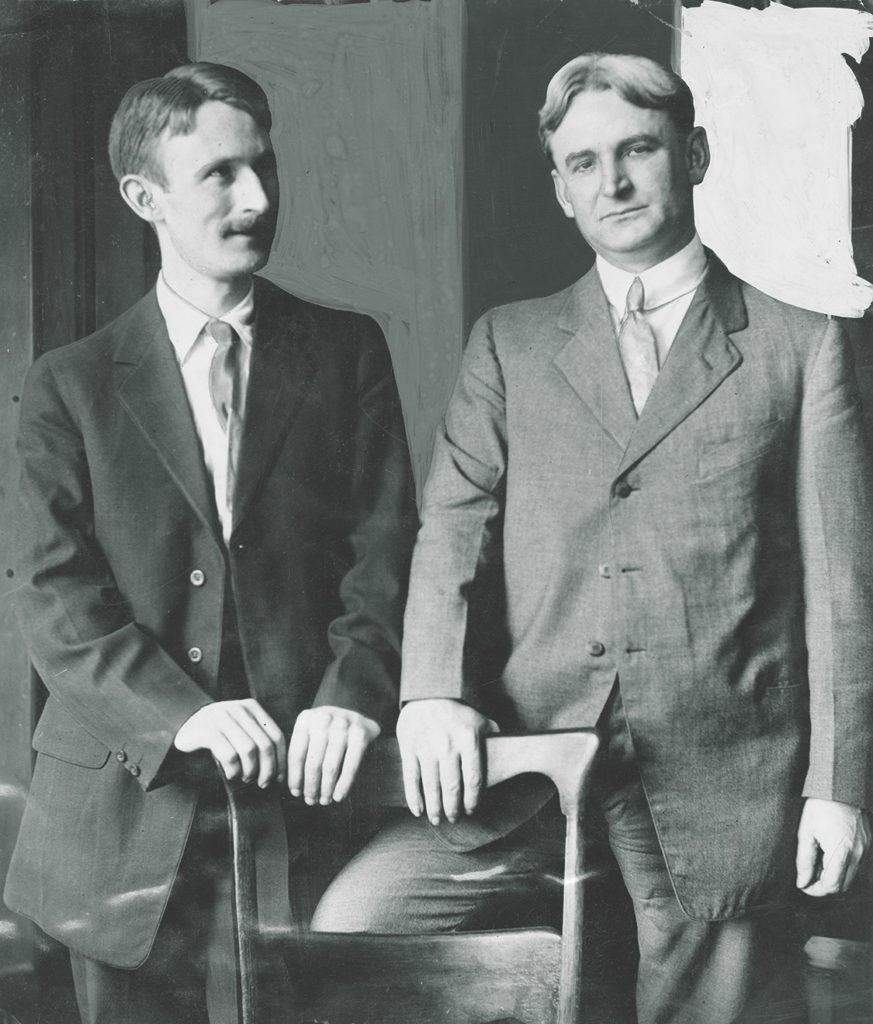
On April 24, Burns had two Indianapolis detectives arrest J.J. McNamara at the union office, charging him with 21 murders. In a basement vault, investigators found 200 lbs. of explosives, percussion caps, fuse coils—and 14 alarm clocks identical to those used in the Los Angeles and Peoria bombings. McManigal and the McNamaras soon were aboard the California Limited, rolling toward Los Angeles.
Headlines blurted “Crime of the Century!”—a phrase that would recur through the 1900s. The way Burns had grabbed the McNamaras led to complaints of kidnapping. Sending a telegram reading “Frame-up! Fiendish plot!”, socialist leader Eugene Debs recalled how management had attempted to frame William “Big Bill” Haywood and other organizers for crimes they had not committed. McNamara Defense Leagues formed nationwide. Buttons and banners carried John McNamara’s clean-cut image with the slogan “KIDNAPPED!” AFL leader Samuel Gompers came to Los Angeles to be photographed with the brothers. A pro-McNamara parade there drew 35,000 participants.
LA’s 1911 mayoral primary was set for October 31; the election, December 5. The bombing trial overlapped that schedule. Amid massive local unemployment, Socialist-Labor candidate Job Harriman was running as much against Otis and the business bloc as he was against Otis’s man, the Democratic incumbent Alexander. Polls had Harriman leading Alexander. Alexander’s reelection, the aqueduct bond issue, and Otis’s other schemes all needed a verdict that effectively pinned the Times bombing on socialism in general and the union movement in particular.
To defend the McNamara brothers, the union retained famed attorney Clarence Darrow, who required a $50,000 retainer and eventually charged $200,000 for the case. In addition to the death penalty, the defendants faced overwhelming evidence—bomb components in the union offices, McManigal’s confession and revelations, letters from John McNamara to James ordering attacks, records documenting union disbursal of $1,000 a month to pay for bombings. Persuaded by meeting with the McNamaras in Los Angeles County Jail that his clients would hang, Darrow decided to try to bribe one of the 124 talesmen in line to serve on the McNamara jury. He had an underling offer a former sheriff’s deputy on the list of prospective jurors $500 in advance and $3,500 upon acquittal to vote against conviction no matter what. The ex-deputy went straight to D.A. John Frederick, who set up a sting. Darrow’s people were to make the payoff at Third Avenue and Los Angeles Street. Frederick had police officers ring that corner. Seeing officers, Darrow’s man steered his contact down Third—into Darrow, who claimed to be present by coincidence. The next day’s Times screamed, “Jury Bribery Charged in McNamara Trial.” The city charged Darrow with attempted bribery. Meanwhile Burns had fitted the jailhouse room where Darrow and the McNamaras conferred with a bug, concealing a Dictaphone, whose stylus etched sounds onto a wax-coated cylinder. He put another in McManigal’s cell.
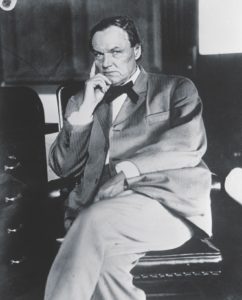
The McNamaras’ trial began on October 11, 1911, awash in press coverage. Muckraker and self-described radical Lincoln Steffens, who had returned from London to cover the trial, had wrangled 21 newspapers into a syndicate to fund his reporting. If jurors exonerated the McNamaras, the socialist Harriman likely would be mayor, dashing Otis’s plans for the San Fernando Valley. Conviction or a guilty plea would keep Alexander in office and probably get the referendum passed—and risk violence. In the primary, on Halloween, Harriman beat Alexander by nearly 4,000 votes; an independent candidate ran a distant third. The December 5 election became a Harriman/Alexander runoff. Los Angeles was electric with tension when Steffens suggested to Darrow that he work out a plea bargain to “stop a fool fight,” keep the McNamaras from execution, and perhaps discourage rioting. Over Thanksgiving weekend Steffens and Darrow recruited Otis, his son-in-law Harry Chandler, and other LA grandees into backing this approach. James McNamara would admit to bombing the Times. John McNamara would confess involvement in the Llewellyn bombing. James would get life in prison; his older brother, 15 years.
Word of the plea December 1 triggered chaos. Union men wept like children. Strikers shouted that the McNamaras had been railroaded. In the December 5 election Alexander defeated Harriman. The water referendum passed. The development cabal got its way. The AFL and the socialist movement, pilloried for supporting the bombers, lost steam. Recounting his role in a memoir, Lincoln Steffens headed a chapter, “I BECOME A GOAT.” Clarence Darrow, tried twice for bribery, was acquitted.
The McNamaras were confined at San Quentin, John until 1921 and James until his death, two months before his older brother’s, in spring 1941. The Los Angeles Times, under nearly eight decades of Chandler family stewardship, became a major newspaper—whose editorial employees unionized in late 2019. In 1912, William Burns testified against 54 defendants, mostly union officials, accused in U.S. District Court in Indianapolis of conspiracy; 38 were convicted on all counts. Burns became the first director of the U.S. Bureau of Investigation, now the Federal Bureau of Investigation.
The ironworkers union survived. Many members regard the McNamara brothers as martyrs. “[D]espite other consequences of the dynamite campaign, they [the McNamaras] did save the Union. The International Officers stretched the limits of zeal in a righteous cause,” A History of the Iron Workers Union declares, “Their strategy and tactics suffered—not the cause or validity of trade unionism.”
This story appeared in the June 2020 issue of American History.

